The Metamorphosis of Cosmological Perspective From The 16th Century Forward
"In the kind of world we have today, transformation of humanity might well be our only real hope for survival." ~ Stanislav Grof
Amazing to discover that our world views act as a filters to our perspectives on reality. The more we learn about the universe, the more we learn about ourselves.
The Copernican Revolution made the 16th Century a time of a major paradigm shift from the old geocentric conceptions of Ptolomy and others — which were experientially and spiritually based in most ways — to the new math-derived heliocentric concept, which is considered scientific or “rational.”
From then on only that which can be weighed and measured is accepted as "real," consciousness was demoted to second place, with quite valid reasons in some fields, but perhaps not in all.
What actually happened was that the center of the universe was removed from a subjective perspective to an objective perspective, with the concomitant materialistic impulse arising out of Galileo and his scientific-philosophic heirs (Locke, Kant, Newton, etc). But that is another stream to this story. Herein we'll look at the cosmological facts and perspectives derived therefrom.
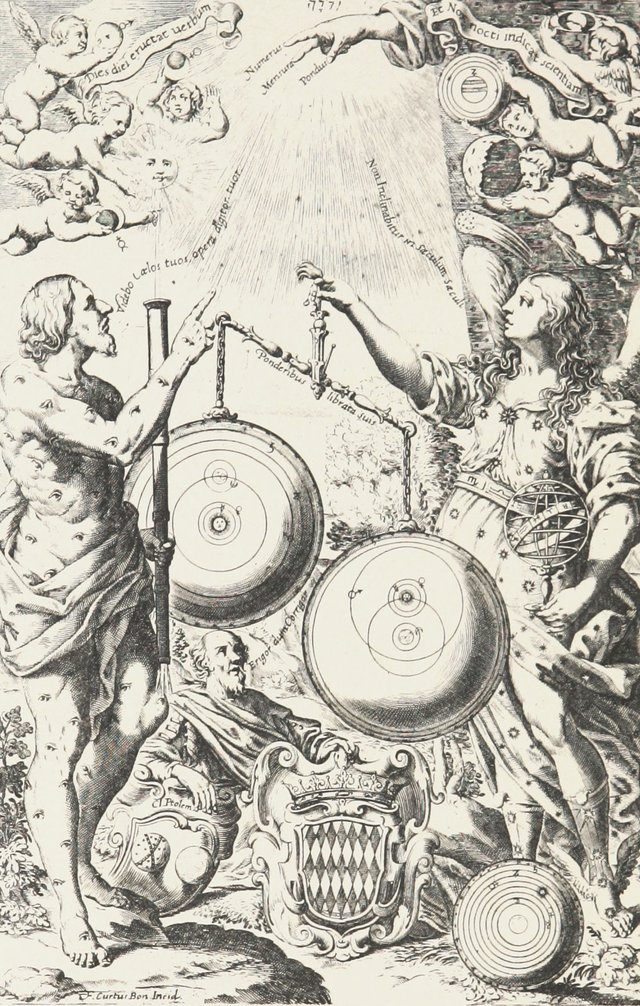
Polish astronomer Nicolaus Copernicus (1473-1543) mathematically reduced the geocentrically-observed complex motions of the planets to their lowest common denominators resulting in the simple orbits of the planets around the Sun.
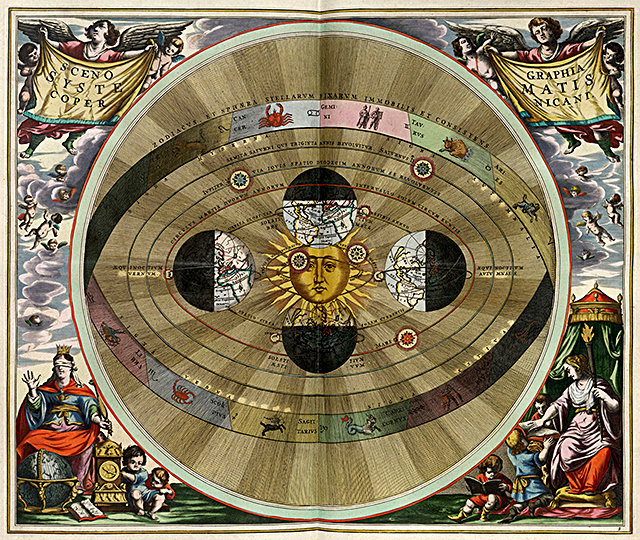
The heliocentric model makes geometric sense, with its basic layout in space, providing simple solutions for the varying brightness of planets, their occasional retrograde motion, and other cosmic phenomena. There is a fundamental logic to it, backed by direct observations and calculations.
Copernicus acknowledged the nascence of his heliocentric theory with Aristarchus, and studied Euclid, Ptolemy & Islamic sources such as Nasir al-Din al-Tusi (13th Century). al-Tusi was an exceptional polymath, and constructed an observatory for determining proper astronomical tables. Copernicus copied diagrams directly from his work, using the “Tusi couple” as an integral device to his calculations, because the orbits aren't really that simple!
Galileo Galilei (1564-1642) – Italian astronomer & father of mechanistic science, discovered the larger moons of Jupiter, and promoted Copernicus’ Heliocentrism. Galileo ignored the Tychonian system which was preferred by astronomers of the time, not taking it seriously.

Tycho Brahe (1546-1601) –Danish astronomer, promoted Geocentrism in the midst of the Copernican Revolution. In his Introduction to the New Astronomy (1588) he presented a Geocentric hybrid of the Ptolemaic and Copernican systems. Mercury and Venus orbit the Sun, the Sun orbits Earth, Mars, Jupiter, and Saturn orbit the Sun at greater distances. Tycho made highly accurate astronomical observations on special equipment of his design, and had a garden planted on astrological relationships (of which I've been unable to find the botanical information on as of yet).
Tycho hired Johannes Kepler, (1571-1630) – German astronomer & mathematician, to help interpret his data on the motions of the planets as observed. Kepler believed in the Copernican system. After Tycho’s death Kepler took the data and used it to create the simplified Heliocentric model using elliptical orbits, the reconciliation of observation vs calculation, the Tychonian vs the Copernican.
Kepler presented what is known as the Harmony of the Spheres, an idea he presented in his Harmonices Mundi (The Harmony of the World, 1619), the relationships between geometry, music, and the structure of the solar system. Thus was presented an orderly heliocentric system based on the nested geometry of the Platonic solids.
The Tychonic system produces the same calculated results as Copernican system, in relation to our Earth-bound observations, the difference being that Tycho considered the Earth to be at rest at the center (with Moon and Sun orbiting the Earth, the rest of the planets orbiting the Sun), and Copernicus reduced Earth’s position to as merely one of the planets orbiting the Sun. The only way to tell these two systems apart would be stellar parallax, which is predicted by the Copernican system.
Parallax is the change in apparent position of an object from different perspectives. Stellar parallax is the expected motion of closer stars against more distant ones from different positions of the Earth’s orbit around the Sun, say six months apart. One of Tycho’s chief arguments against the Copernican system was this lack of observable stellar parallax, indicating an unlikely vast empty void between the outer orbit of the planets and the realm of stars.
Astronomer Royal James Bradley’s experiments measuring the position of star gamma Draconis from London in 1727 indicated what is known as stellar aberration, due to what he considered Earth's motion around the Sun.

Think of aberration as similar to rain coming at an angle when you run into it rather than standing still. However, Bradley did not measure the sought after parallax, the assumed change in position of stars due to Earth’s orbit around the Sun.
Bradley’s experiments were later followed by Astronomer Royal George Biddell Airy's negative results in the detection of parallax in his experiments of 1871, the famous “Airy’s Failure.”
Far from the expected results, Airy’s Failure could be taken that the stars are moving relative to a stationary Earth and not the other way around. By first filling a telescope with water to slow down the speed of light inside, then calculating the tilt necessary to get the starlight directly down the tube, Airy failed to prove the heliocentric theory, since the starlight was already coming in the correct angle with no tilt necessary. Geocentrists take this as proving the geocentric model correct.
These negative results led on through decades of ether drift experiments, seeking to find an ether which would be moving with the Earth, pulling the starlight along with it as it rounded the Sun. This was because the Copernican view had settled in and the apparent geocentric results were anathema, so eventually Relativity was mathematically constructed to explain away any results not germane to heliocentrism.
Friederich Bessel measured the parallax of the star 61 Cygni in 1838, prior to Airy, which is curious that it is never mentioned in discussions of Airy’s Failure. It should be noted that 61 Cygni has one of the largest stellar proper motions (https://en.wikipedia.org/wiki/61_Cygni)
As technology advanced more precise measurements of the stars have been able to be made.
The satellite Hipparcos was put up in 1989 specifically to measure parallax, and it has been relied upon heavily. However, comparing Hipparcos data with parallax measurements from Hubble and ground measurements the “Hipparcos anomaly” of an error of about 55 light years to the Pleiades was found. It appears this anomaly applies only to star clusters, which is curious!
So a new satellite, Gaia is now in L2 orbit:
“The main goal of the Gaia mission is to make the largest, most precise three-dimensional map of our Galaxy by surveying an unprecedented one per cent of the galaxy's population of 100 billion stars.”
and the first major data release is the star map pictured:
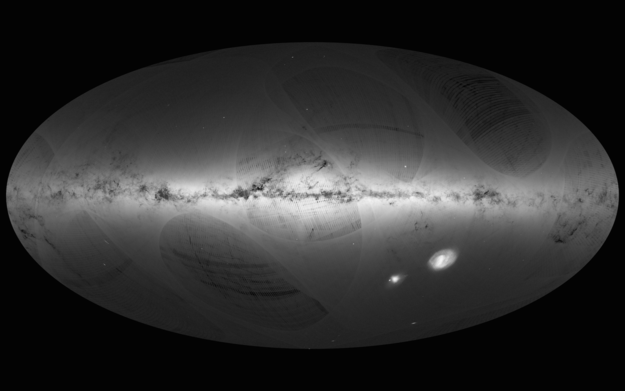
Parallax research describes that the movement of the Earth around the Sun is indicated by the measurements, as tiny as they are. We are clearly reliant on the readings of equipment, we cannot directly experience the change of position so measured.
What is little discussed is “negative parallax.” The distribution of positive and negative parallax measurements in the Tycho catalogue is about equal with 25% negative parallax readings, 29% positive parallax readings, with the remainder showing effectively no parallax. Also the magnitude of the readings were about equal between negative and positive. If the negative readings are in error, then either the equipment is faulty and no readings are reliable, or the recorded stellar movements themselves are only proof of motion, not parallax.
There are numerous other historic and scientific proofs for Earth’s spherical shape, this is but a limning of the subject, really just my collected notes and thoughts on the subject. But as we will see in future installments, much of this is still being questioned with varying degrees of knowledge and intelligence.
~ Alkemix

Hope you enjoyed this writeup, definitely more to come. Clearly some of these ideas require serious cognitive effort, and I acknowledge my shifting perspectives as I continue to gain further information on the subjects at hand.
Remember to retain a suspended judgment until sufficient facts are acquired to make at least a preliminary determination.
Happy to receive any comments, questions, corrections and new data!!!
Here's my first article in this series:
https://steemit.com/science/@alkemix/ancient-people-who-knew-earth-is-a-globe
Tesla made note of the globe Earth in some of his statements:
https://steemit.com/science/@alkemix/great-tesla-quotes
As it was essential to his greatest invention, Worldwide Wireless Power:
https://steemit.com/life/@alkemix/discover-tesla-s-secret-free-superluminal-power
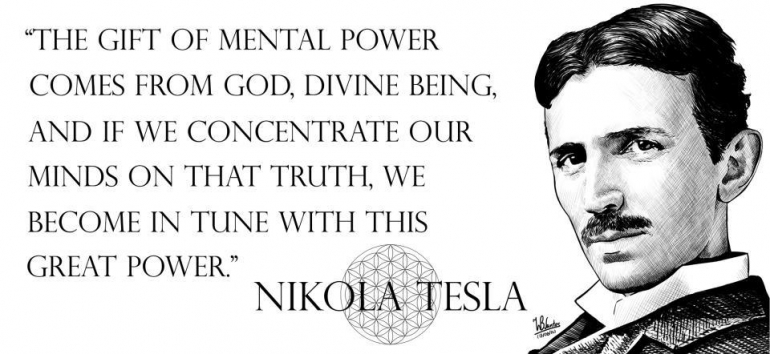
"Whenever a theory appears to you as the only possible one, take this as a sign that you have neither understood the theory nor the problem which it was intended to solve." ~ Karl Popper

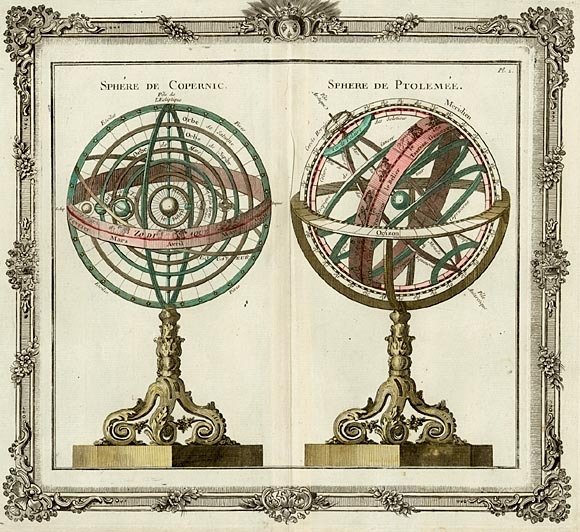
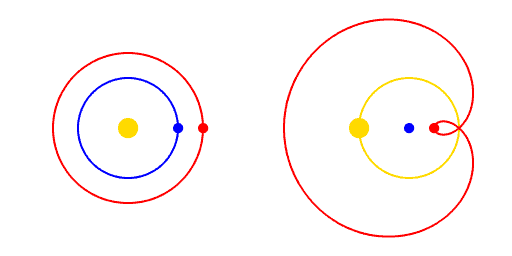
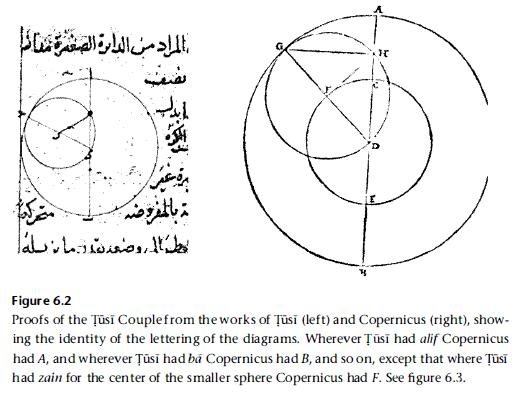


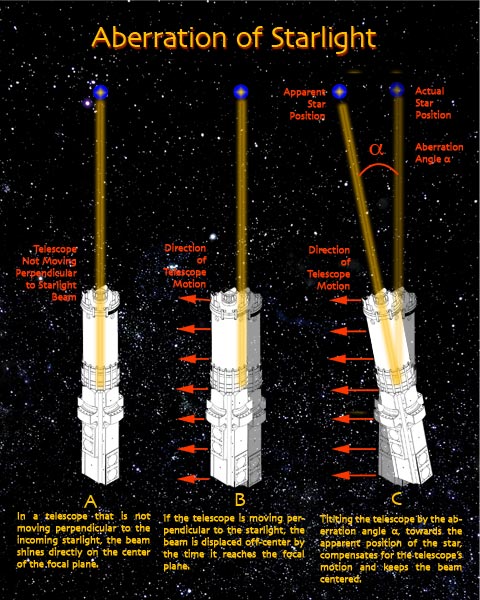
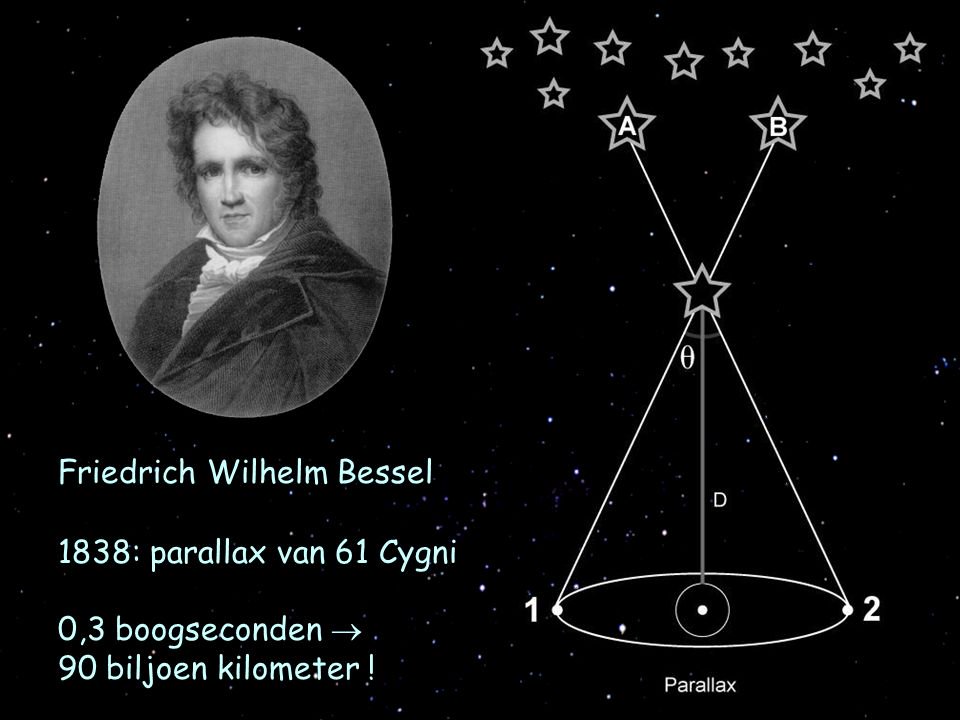
I love the opening quote. It really relates to this article.
This science really opens up people's perspective on things too.
As above, so below.
Thanks, working on next sections, hope to post more in next day or two. They definitely start to get more interesting from here, wanted to lay down the foundational aspects. So these first two have been an introduction.
Disclaimer: I am just a bot trying to be helpful.
You're not being helpful, more of a pest!
Exactly.
Congratulations @alkemix! You have completed some achievement on Steemit and have been rewarded with new badge(s) :
Click on any badge to view your own Board of Honor on SteemitBoard.
For more information about SteemitBoard, click here
If you no longer want to receive notifications, reply to this comment with the word
STOP